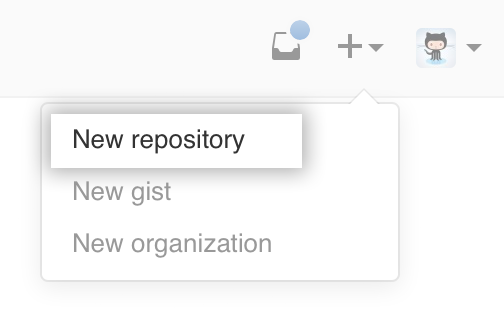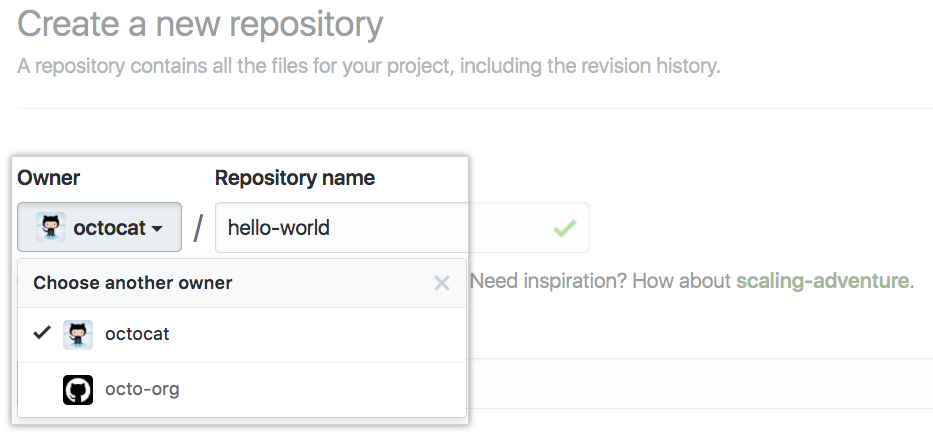You can create a new repository on your personal account or any organization where you have sufficient permissions.
Tip: By default, all organization members can create repositories for the organization. If you choose, you can restrict repository creation permissions to organization owners only. For more information, see "Repository permission levels for an organization."
 In the upper-right corner of any page, click , and then click New repository.
In the upper-right corner of any page, click , and then click New repository.
 In the Owner drop-down, select the account you wish to create the repository on.
In the Owner drop-down, select the account you wish to create the repository on.
 Type a name for your repository, and an optional description.
Type a name for your repository, and an optional description.
- You can choose to make the repository either public or private. If your instance is not in private mode or behind a firewall, public repositories are visible to the public, while private repositories are only accessible to you, and people you share them with. Contact your site administrator for more information about private mode or a firewall on your Enterprise instance.
- There are a number of optional items you can pre-populate your repository with. If you're importing an existing repository to GitHub, don't choose any of these options, as you may introduce a merge conflict. You can choose to add these files using the command line later.
- You can create a README, which is a document describing your project.
- You can create a .gitignore file, which is a set of ignore rules.
- You can choose to add a software license for your project.
- When you're finished, click Create repository.